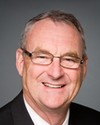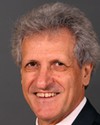Good morning. Thank you very much for inviting us again. It's always a pleasure.
Maintaining a secure aviation security regime is a key component of Transport Canada's mandate, and we're working with our partners, such as CATSA, in doing so.
Ongoing domestic and international intelligence reports confirm that civil aviation remains a favoured target for terrorists globally and that Canada remains a possible target. The seriousness of this target was underscored throughout the world and here at home on December 25, 2009, when a terrorist attempted to detonate an explosive on a flight between Amsterdam and Detroit.
Indeed, the fact that this incident occurred over Canadian air space illustrates that Canada is not immune to terrorist attack. This is but the latest reminder that terrorists are continuing to seek new ways to bypass the measures we have in place.
Transport Canada's efforts in aviation security go back many decades, since Air India in particular. Also, September 2001 was another key milestone in Canada's aviation security program, and the government has made major investments in aviation security.
In total, the government has allocated over $4 billion since 9/11 towards this goal. We improved the system and closed important gaps by creating CATSA to ensure consistent screening at Canadian airports. We reinforced cockpit doors on commercial aircraft. We established an inflight security officer program, run by the RCMP. We implemented biometric restricted-area identity cards at airports. We strengthened our oversight and inspection regime.
More recently, in budget 2010, the government announced $1.5 billion for CATSA and Transport Canada to enhance Canadian aviation security with advanced technology, more screeners, and improved programs. Budget 2010 also allocated $37.9 million over two years to secure a key sector of Canada's aviation system by implementing a comprehensive air cargo security program.
We have been working very hard to help accelerate the implementation of these enhancements in light of the December 25, 2009 incident and the impact that new security requirements have had on travellers and industry, although the US measures have now been modified and impacts are much reduced.
The line-ups and wait times we saw at our airports following the December 25, 2009 incident illustrate the challenge that we face in striking the right balance between security and efficiency, or in other words, the challenge of maintaining security while limiting the social and economic costs attached to security measures. This is particularly true in times of crisis. We must always remember that the aviation system is widely integrated. We must meet international obligations under the international civil aviation organization. This is essential if we want to allow our aviation industry to compete on an even playing field and to maintain unfettered access to important destinations like the United States.
Nonetheless, we recognize that having passengers line up for hours at airports for screening is not sustainable, as it damages the aviation industry, results in lost productivity and unacceptable inconvenience for Canadians, and ultimately impacts our economy.
The good news is that CATSA is rolling out more efficient and internationally compatible screening technology. They are continuing to study their processes and develop new approaches, as we heard this morning, including the trusted traveller pilot project currently under way at the Ottawa airport. Another example, which was also discussed at length, is the installation of full body scanners at major Canadian airports.
We are also actively working on new ways to improve the system and bring down the costs. One great example is exploring the possibility of integrating passenger behaviour observation into the screening processes. By focusing our efforts on potential higher-risk passengers, we expect to improve screening effectiveness and at the same time potentially target our resources where the benefits are the greatest.
However, as we make the screening process more secure, we recognize that terrorists may shift their focus to other “softer” targets at the airport. That is why we are in the process of establishing regulatory requirements for airports to develop security plans aimed at addressing the full range of risks facing their operations, including outside the restricted areas where the public and passengers may congregate.
We are also actively engaged with our international partners to improve the security of the global system. Over the last four months, Transport Canada and Public Safety have participated in a number of regional ministerial meetings on aviation security in Mexico, Japan and Nigeria. We are also allocating funding to build capacity in countries that need our help to meet these important security requirements.
As I've tried to illustrate, Transport Canada's approach to aviation security is based on continuous improvement. We welcome and appreciate input and suggestions from international and domestic partners, and we have, to the extent possible, incorporated the recommendations of various studies over the past few years.
In particular, we look forward to the committee's comments and suggestions that may come forward from your study of aviation security as we move on a variety of fronts and in the face of many challenges. We will continue our commitment to ensure the safety and security of passengers while maintaining the efficiency and competitiveness of Canada's aviation industry.
Thank you.



